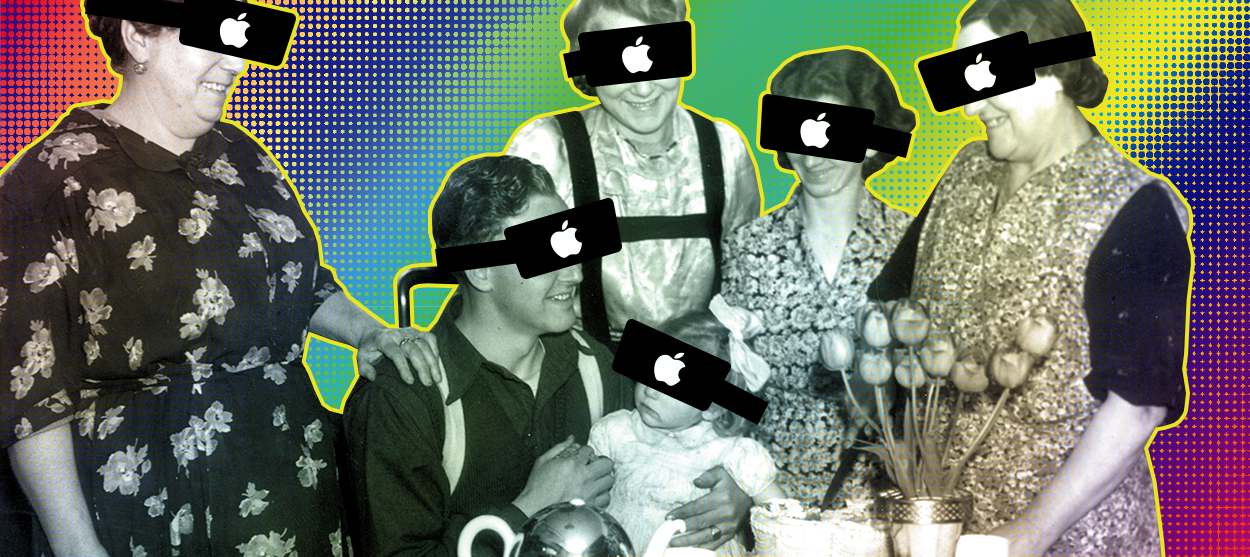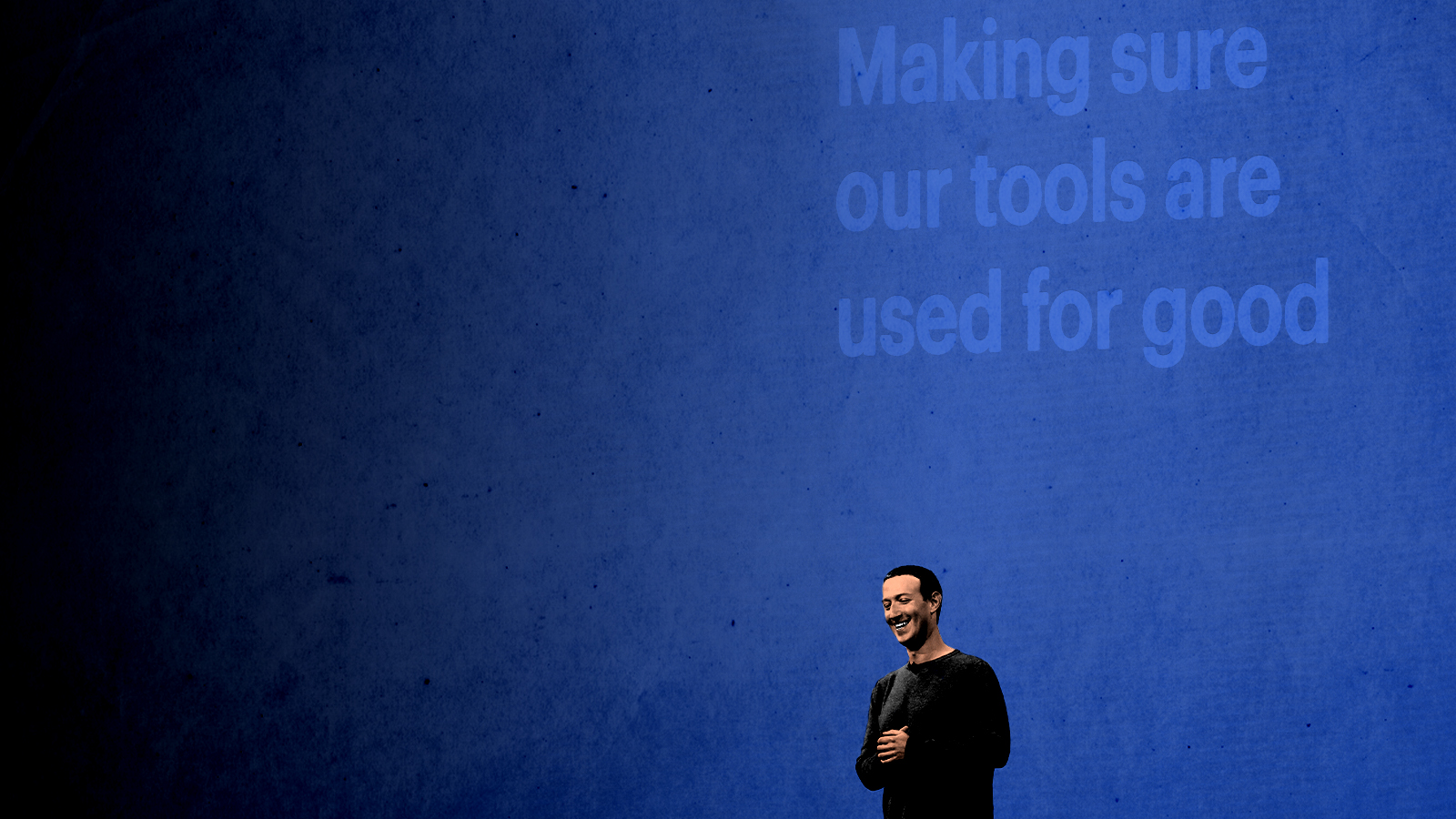Can Apple make VR mainstream?
What to think of the company's foray into augmented reality


For all their glossy marketing and slick messaging, you can reduce Apple's runaway success to one basic move: Take something somebody else has done and make it better. Every popular product they have made from the first iPhone to the latest AirPods has followed this model, and in the process, the company has almost always taken a product category from niche to mainstream.
So the news that Apple is planning a couple of augmented reality products in the next two to four years means we are inevitably asking the question: Can Apple make AR mainstream?
It is a tricky question to answer, especially for a technology like augmented reality glasses. While the iPhone and iPad emerged during the age of Web 2.0, a time during which we were both awed by and eager for new tech, we now live in a world far more skeptical of the invasiveness of our devices. Think of the flop that was the Google Glass headset: It quickly fell out of favor because of the creepy privacy dynamics that came along with people wearing a headset with a camera.
The Week
Escape your echo chamber. Get the facts behind the news, plus analysis from multiple perspectives.

Sign up for The Week's Free Newsletters
From our morning news briefing to a weekly Good News Newsletter, get the best of The Week delivered directly to your inbox.
From our morning news briefing to a weekly Good News Newsletter, get the best of The Week delivered directly to your inbox.
So if Apple wants to make augmented reality a successful category, it will have to help consumers get past those privacy objections. How?
As a nascent technology, augmented reality has a paucity of applications. It has thus far seen limited take-up in games like Minecraft Earth, or with expensive headsets like Microsoft's HoloLens, which has intriguing but limited high-end uses in fields like design or medicine. So it's worth asking what these technologies are for. AR, as the name suggests, is supposed to augment our reality — that is, to layer digital information on top of the existing world. That can be done either by viewing things through a phone or tablet camera and having digital objects appear over the view, or — and perhaps more importantly — through AR glasses that place digital information into one's field of vision. That last approach is the crucial one, because if AR tech is going to become mainstream, users will have to be able to wear it while doing everyday tasks, like walking down the street.
Apple's plan, according to both The Information and Bloomberg, is to release a larger headset in 2022, and a smaller one a year later. The former will be for those more technical, professional users, while the latter will likely be more akin to Google Glass — a pair of glasses aimed at the average consumer that displays information either in a user's peripheral vision or directly in front of them.
If Apple wants to take AR mainstream though, it has to delicately balance not just privacy, but the extent to which the technology intrudes on one's everyday life. Google Glass failed before it even really launched due to the social reaction rather than technical flaws, which means that Apple's problem is only partly about engineering. It's not even really about user experience. Instead, the pitch has to be that its AR tools augment reality in a human and personal way.
A free daily email with the biggest news stories of the day – and the best features from TheWeek.com
Thankfully for Apple, it has some precedent here. The Apple Watch excels as a device with granular controls for notifications, allowing you to filter out the general noise of a smartphone and focus solely on important things. The new AirPods Pro have a feature called Transparency, which allows users to hear amplified ambient noise so as to catch announcements, talk to people, and more. It's a small detail, but it shows that Apple is thinking about not just what a piece of tech can do, but the social and physical context in which it is used.
With that in mind, Apple's approach to AR should focus less on augmentation and more on ambience: peripheral information that guides or informs. Most obvious would be directions, whether on the street or as in the common demo for AR, navigating and finding things in a retail store. What's more, if people are already suffering the ill effects of being overly enmeshed in technology, perhaps detailed notifications of every text message blinking in the corner of your eye would be a mistake. Instead, Apple might have much more abstract visual clues, like glowing colors, or even haptic feedback, like that deployed by the Apple Watch.
Privacy of course is going to be a huge concern. Perhaps Apple will learn from Google's mistake and simply not include a camera in its AR headsets. Yet, it seems the key thing that Apple might do to make AR succeed is to think of it not in terms of adding bells and whistles, as much as exercising restraint: that is, to produce tech that is ambient in function, unintrusive, and that, in design, errs on the side of delivering less rather than more.
Tech that doesn't take into account the world in which we live can elicit strong reactions from would-be consumers: After Google announced its Glass product, it only took a short while for people to develop the term "Glasshole" for someone who wore the specs. If Apple wants to avoid that same fate and have its AR products become the next big thing, it would do well to keep that in mind — and remember that when it comes to new tech, less is often more.
Want more essential commentary and analysis like this delivered straight to your inbox? Sign up for The Week's "Today's best articles" newsletter here.
Navneet Alang is a technology and culture writer based out of Toronto. His work has appeared in The Atlantic, New Republic, Globe and Mail, and Hazlitt.
-
 The best homes of the year
The best homes of the yearFeature Featuring a former helicopter engine repair workshop in Washington, D.C. and high-rise living in San Francisco
-
 Critics’ choice: The year’s top 10 movies
Critics’ choice: The year’s top 10 moviesFeature ‘One Battle After Another’ and ‘It Was Just an Accident’ stand out
-
 The small Caribbean island courting crypto billions
The small Caribbean island courting crypto billionsUnder the Radar Crypto mogul Olivier Janssens plans to create a libertarian utopia on Nevis
-
 How do you solve a problem like Facebook?
How do you solve a problem like Facebook?The Explainer The social media giant is under intense scrutiny. But can it be reined in?
-
 Microsoft's big bid for Gen Z
Microsoft's big bid for Gen ZThe Explainer Why the software giant wants to buy TikTok
-
 Apple is about to start making laptops a lot more like phones
Apple is about to start making laptops a lot more like phonesThe Explainer A whole new era in the world of Mac
-
Why are calendar apps so awful?
The Explainer Honestly it's a wonder we manage to schedule anything at all
-
 Tesla's stock price has skyrocketed. Is there a catch?
Tesla's stock price has skyrocketed. Is there a catch?The Explainer The oddball story behind the electric car company's rapid turnaround
-
 How robocalls became America's most prevalent crime
How robocalls became America's most prevalent crimeThe Explainer Today, half of all phone calls are automated scams. Here's everything you need to know.
-
 Google's uncertain future
Google's uncertain futureThe Explainer As Larry Page and Sergey Brin officially step down, the company is at a crossroads
-
 We're losing control of our computers
We're losing control of our computersThe Explainer The ideal of computing in which users can make their devices do whatever they want is be dying — and we'll all be worse off for it
